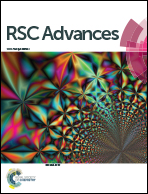Tuning the structures and electron transport properties of ultrathin Cu nanowires by size and bending stress using DFT and DFTB methods
Abstract
The electron transport properties of ultrathin Cu nanowires (NWs) with diameters of 0.2–1.0 nm under different bending stresses are reported for potential future application in flexible displays and flexible solar cells. Density functional theory (DFT) and density-functional-based tight-binding (DFTB) approaches have been combined to systematically discover the ballistic transport and diffusive transport of ultrathin Cu NWs at the nanoscale. Our DFT calculations show that with an increase of bending stress (f), the structures of both nonhelical and helical wires become disordered, then exhibit a phase transition and eventually collapse. Therefore, the quantum conduction (G) values are reduced. In addition, as the size of the nanowires increases, the maximum bearable bending stress (fc) reduces. fc of a helical atomic strand is decided by its diameter, while fc of a nonhelical atomic strand is decided by the area of the cross section. Our DFTB calculations reveal that the intermediary atoms are the most important for forming the loop between two electrodes and implementing diffusion transport. Among the seven structures, 6-1b exhibits the best properties, after comprehensively considering the results of quantum transport, diffusive transport and collapse-resistance.


 Please wait while we load your content...
Please wait while we load your content...